Ever since we began exploring the rise in product operations (product ops), we’ve been hearing stories about how the function has revolutionized product teams. And it’s not just the Baader-Meinhof Phenomenon (aka recency bias) at work here. We’ve opened the door to a new conversation, and product leaders are marching through with passionate stories all their own. That’s why we’re excited to share this first-ever research on the role, courtesy of our friends at LinkedIn.
Because as product ops becomes a critical component of successful product teams, it begets some questions: is it only valuable for large organizations? Do former product managers (PMs) make for the best product ops people? The list goes on and on.
Below, you’ll find data from approximately 25,000 LinkedIn profiles of professionals with product ops titles. You’ll probably read some of the results and think, that makes sense — but you also may be surprised by some of these stats about the people paving the way for product ops.
Where (in the world) is product ops?
It was interesting to see that the geographic location of product ops practitioners is fairly broad. The majority (57.3%) are in North America, but 20.1% of product ops people reside in Asia, followed by 15.5% who call Europe home.
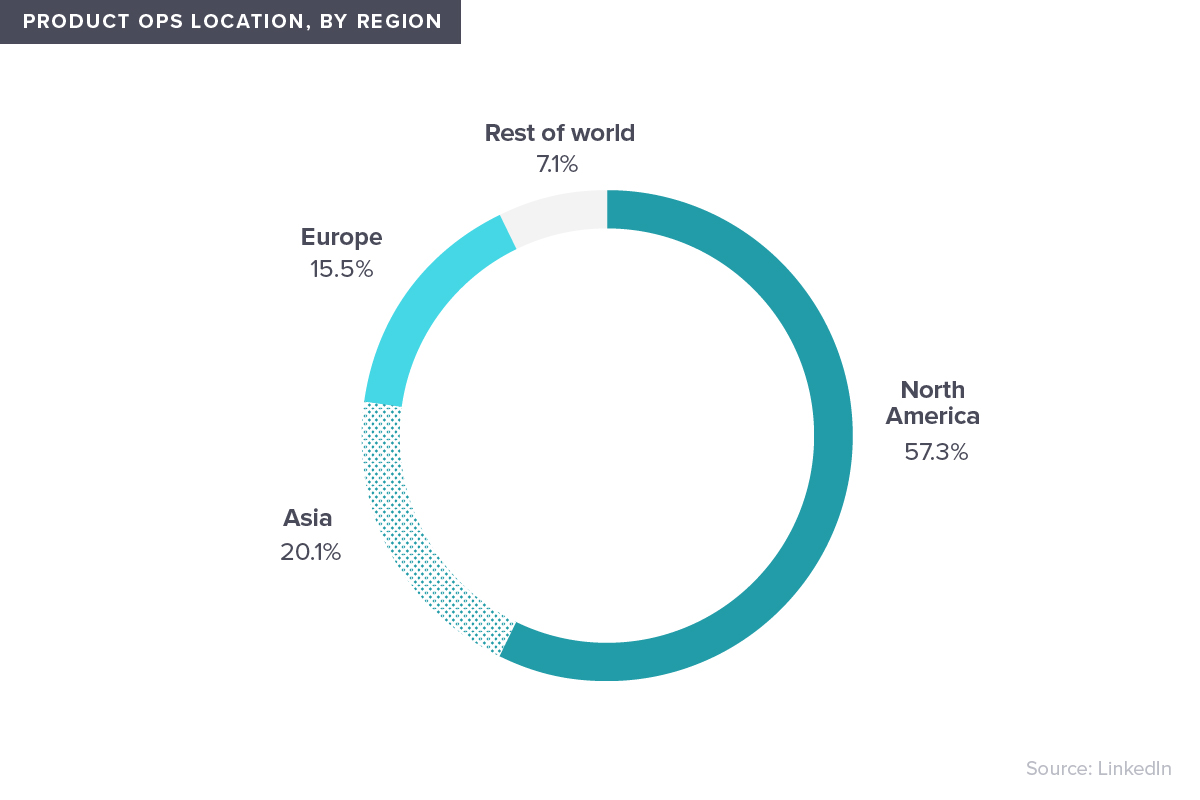
The results are slightly less broad when you look at their geographic location broken down by country. The US holds 53.7% of product ops pros, followed by China (11.9%), the UK (5.9%), and India (3.7%).
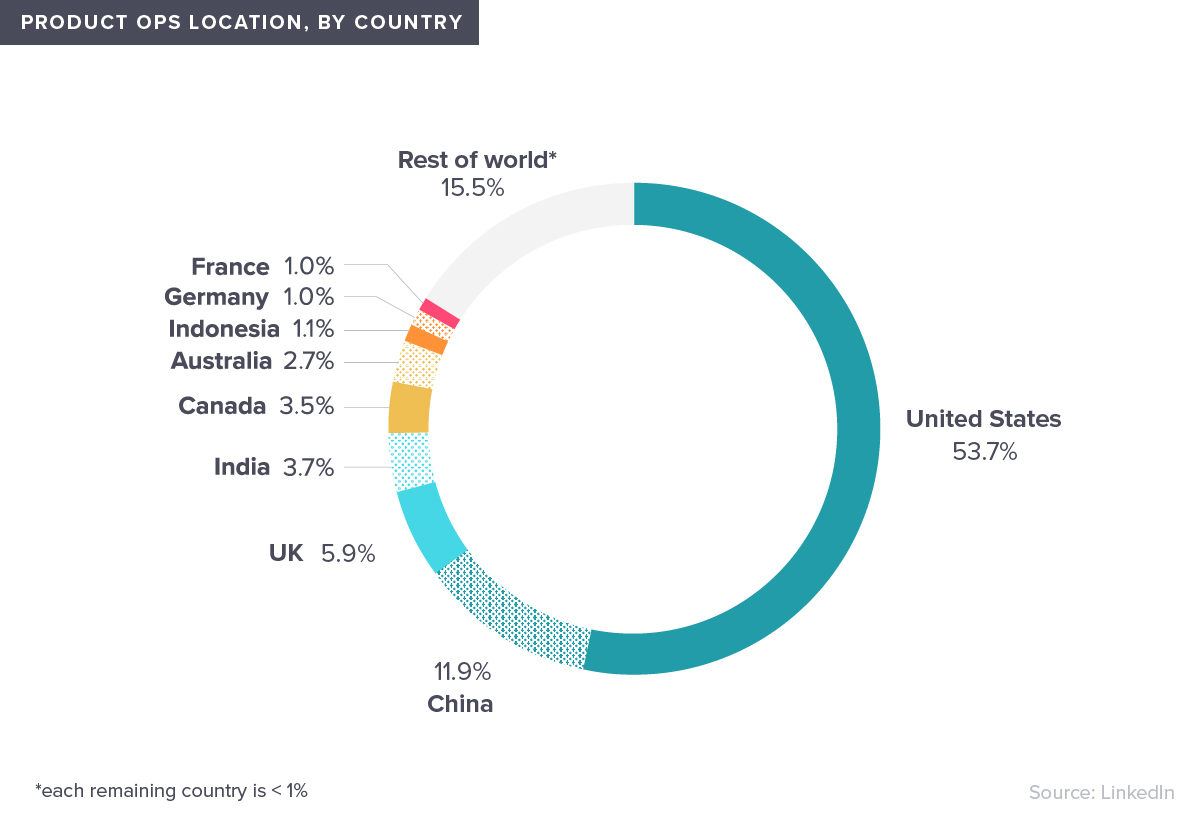
What does this tell us? Although it’s concentrated in a handful of countries, product ops is a global phenomenon.
Product ops reaches beyond the tech bubble
Next, let’s look at where these product ops people actually work. Which industries and companies dominate the product ops landscape? Are they scrappy startups or large enterprises?
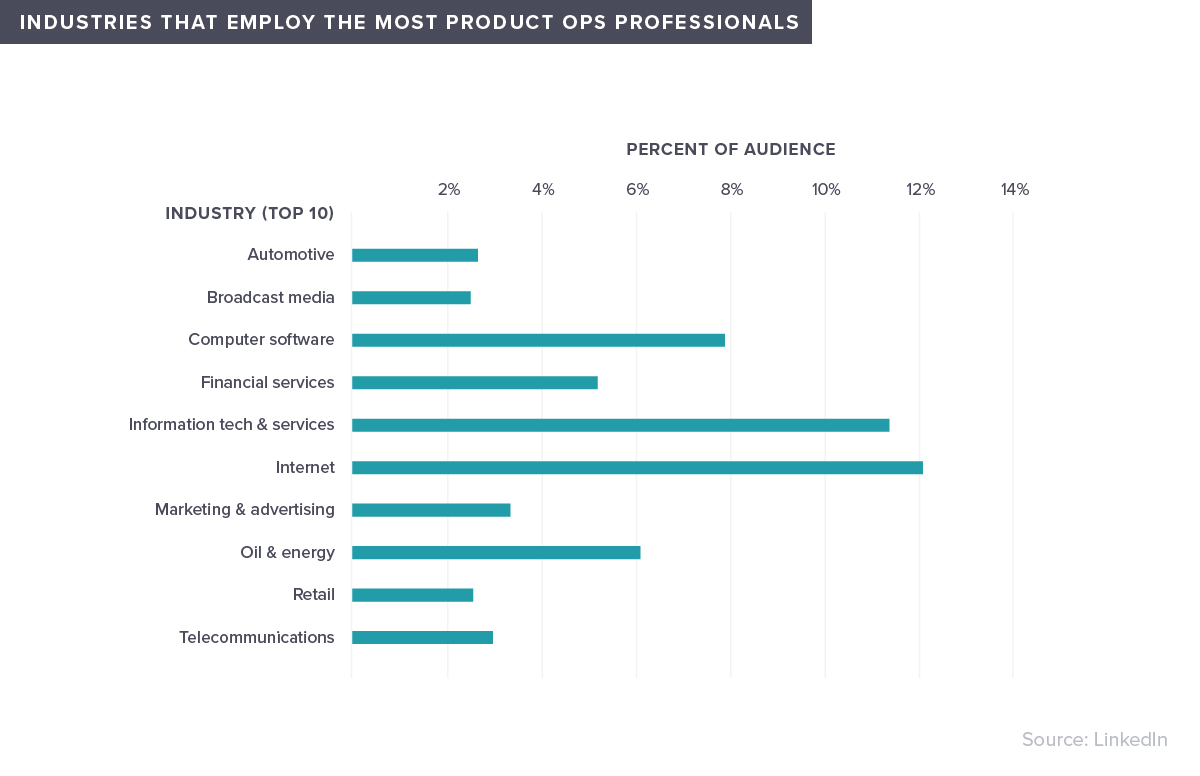
As one might guess, the industries that employ the most product ops people are largely digital-first: internet (12.1%), information technology (IT) and services (11.4%), and computer software (7.9%) top the list.
Things get even more interesting with the companies that employ the most product ops people.
The top 20 include the high-profile technology companies you’d expect — like Google, Uber, Apple, and Facebook — but there’s also Boeing, Lockheed Martin, Allstate, and Nike. In other words, every company is, in some way, a software company — and thus can benefit from a product ops function.
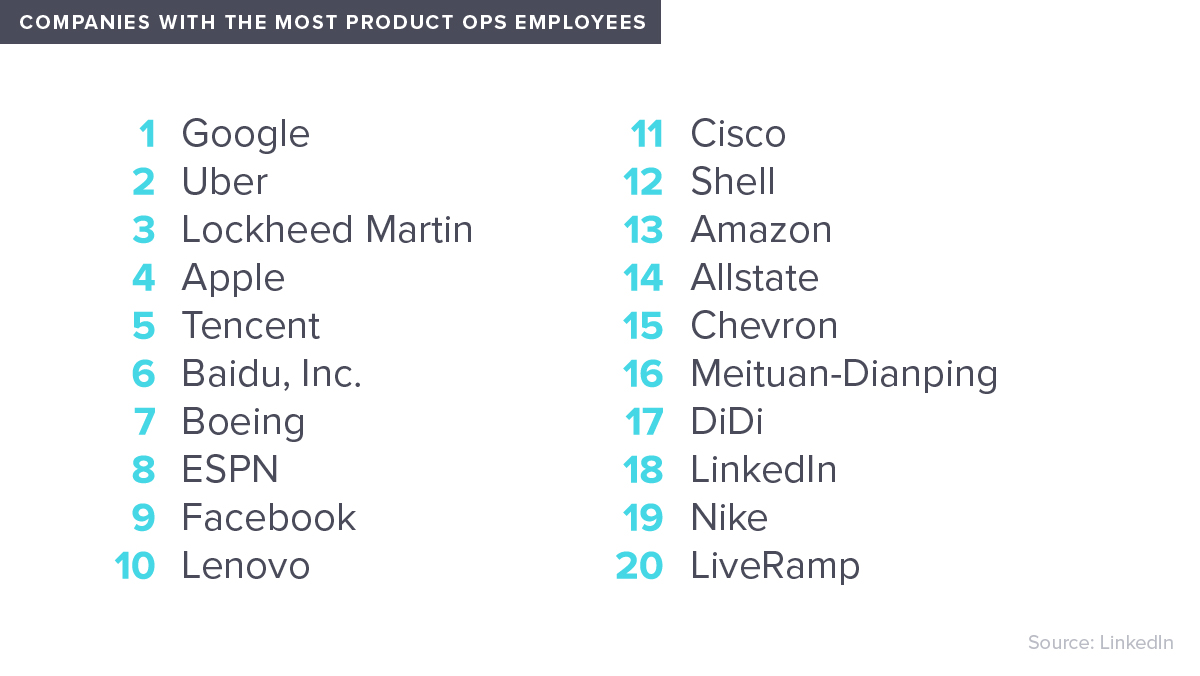
There are many reasons (and signals) for a company to build a product ops function, one of the most common being that product ops comes with scaling. And while the data did show that product ops is most prevalent at large companies (29.9% of people with product ops titles work at companies of 10,000+ employees), the third most common company size was 51-200 employees (10.4%), followed by companies with 11-50 employees (8.7%).
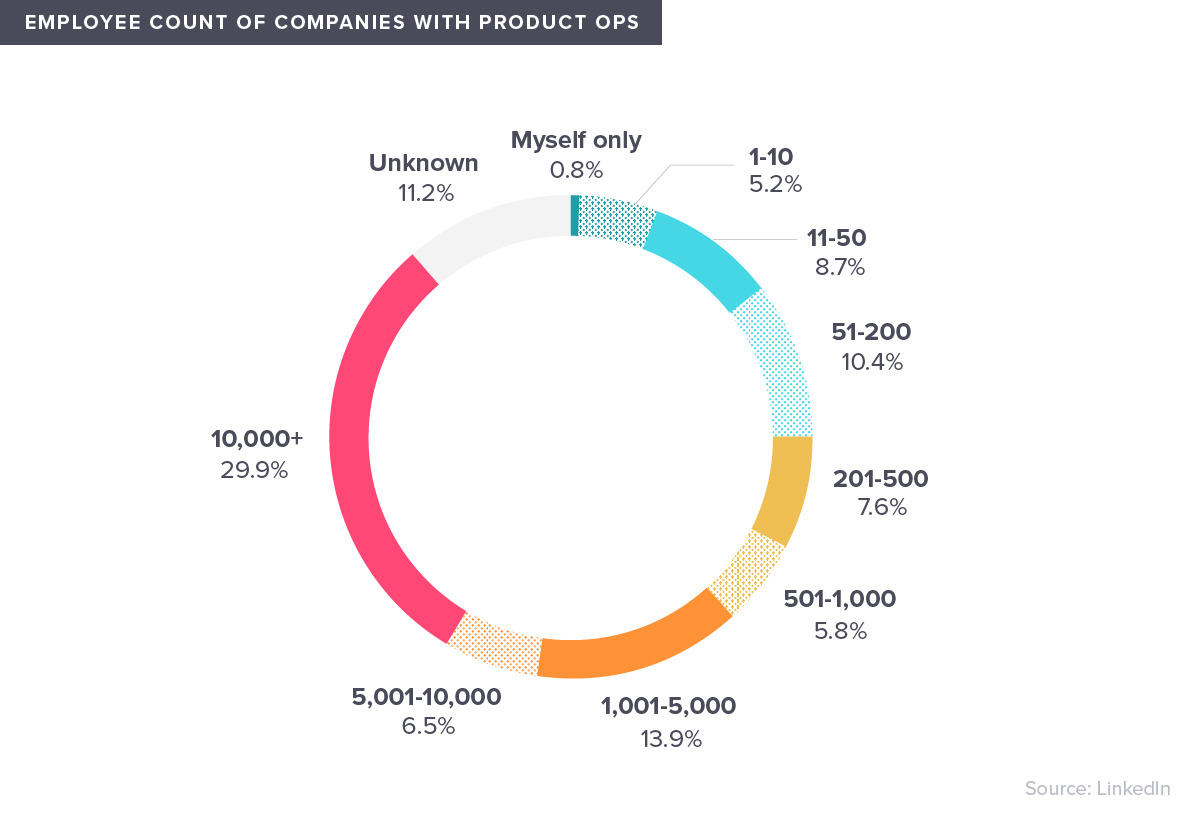
So yes, product ops is important for large companies with product manager counts in the double (or triple) digits. But the function is also extremely beneficial for organizations that are gearing up for scale, to help set a framework for alignment and efficiency around the product.
We were also given a glimpse into how these product ops roles fit into their respective companies. For our purposes, “function” refers to where product ops fits into an organization, based on LinkedIn’s algorithmic classification of titles into overarching categories.
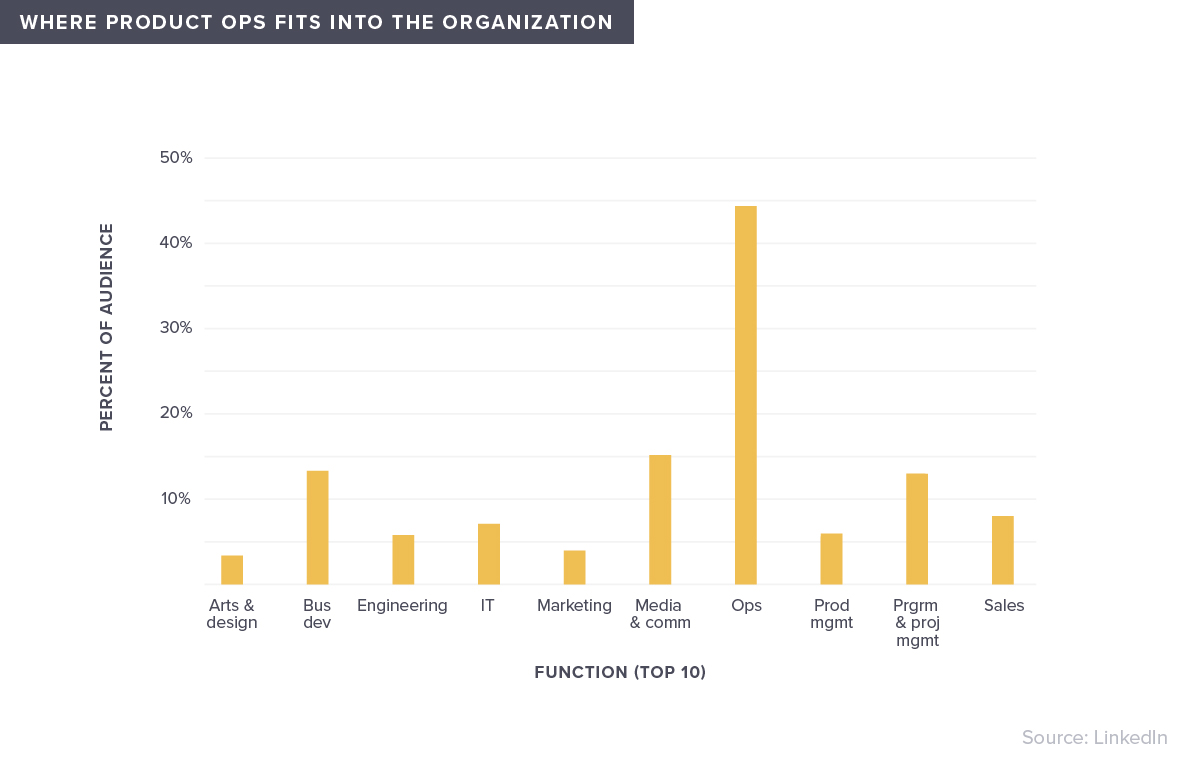
The takeaway? While 44% of product ops people align with their operations department, there is still a relatively wide range. Again, this is based on LinkedIn’s algorithm, so we should take it with a grain of salt. But it points to the idea that there isn’t one “right” way to do product ops.
The path to product ops
One of the most surprising data points was the years of experience held before working in product ops. For these 25,000 LinkedIn members, the average tenure before entering a product ops role was a whopping 7.9 years.

Their seniority levels told a similar story: 33.7% of product ops people hold a manager role, 21.2% are directors, and 9% are VPs. Not to mention 21.7% have “senior” in their title, and only 8.3% of product ops people are in entry level roles.
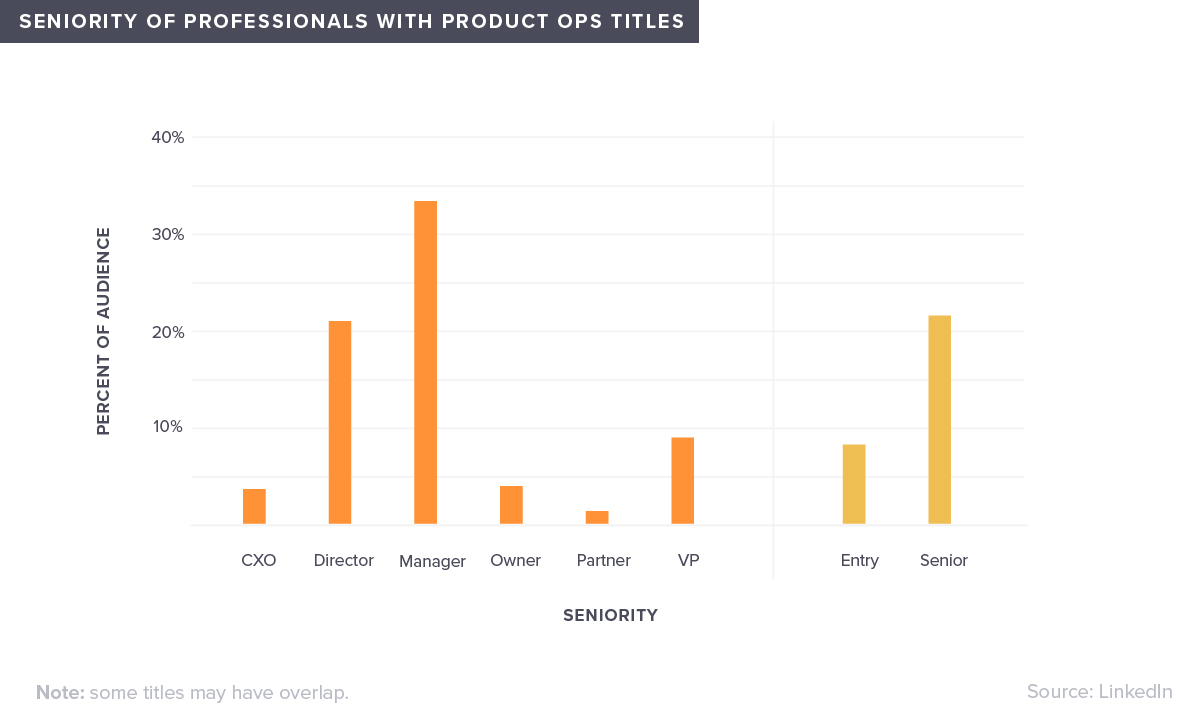
Put simply, product ops is not a junior role. What’s arguably more interesting is that there isn’t one clear way into product ops — everyone’s 7.9 years look a little different.
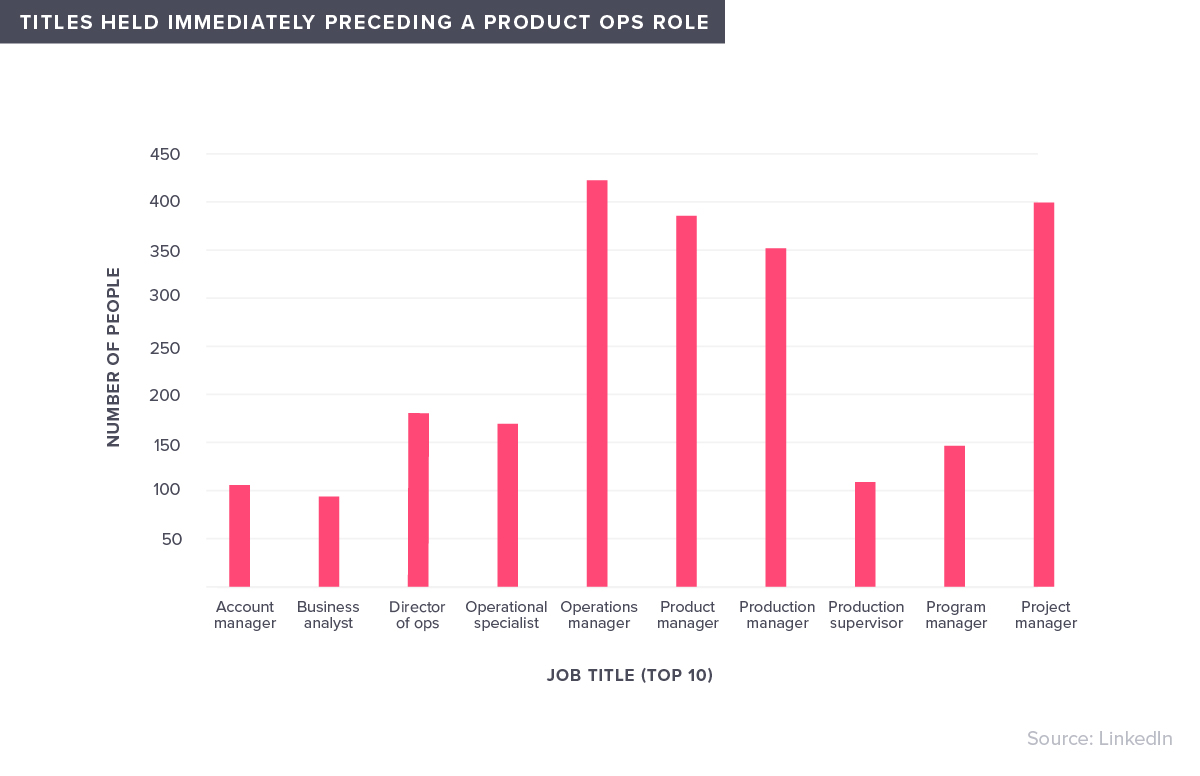
The most common previous occupations include everything from product manager, director of operations, and production supervisor to project manager, business analyst, and account manager. Whether someone was down an operations or project management path and then pivoted to apply those skills to product, or a product person realized their interest in optimizing the work they’re currently doing — the path to product ops is a winding one.
The people behind the job title
Similar to their previous occupations, the top skills associated with product ops people’s LinkedIn profiles spanned a wide range, making it clear that product ops isn’t strictly a “product” job.
The top skills also reveal two different types of product ops functions: those that are focused on data (with skills like business analysis, data analysis, and analytics at the forefront) and those that are rooted in production and efficiency (with skills like operations management, business process management, and engineering).
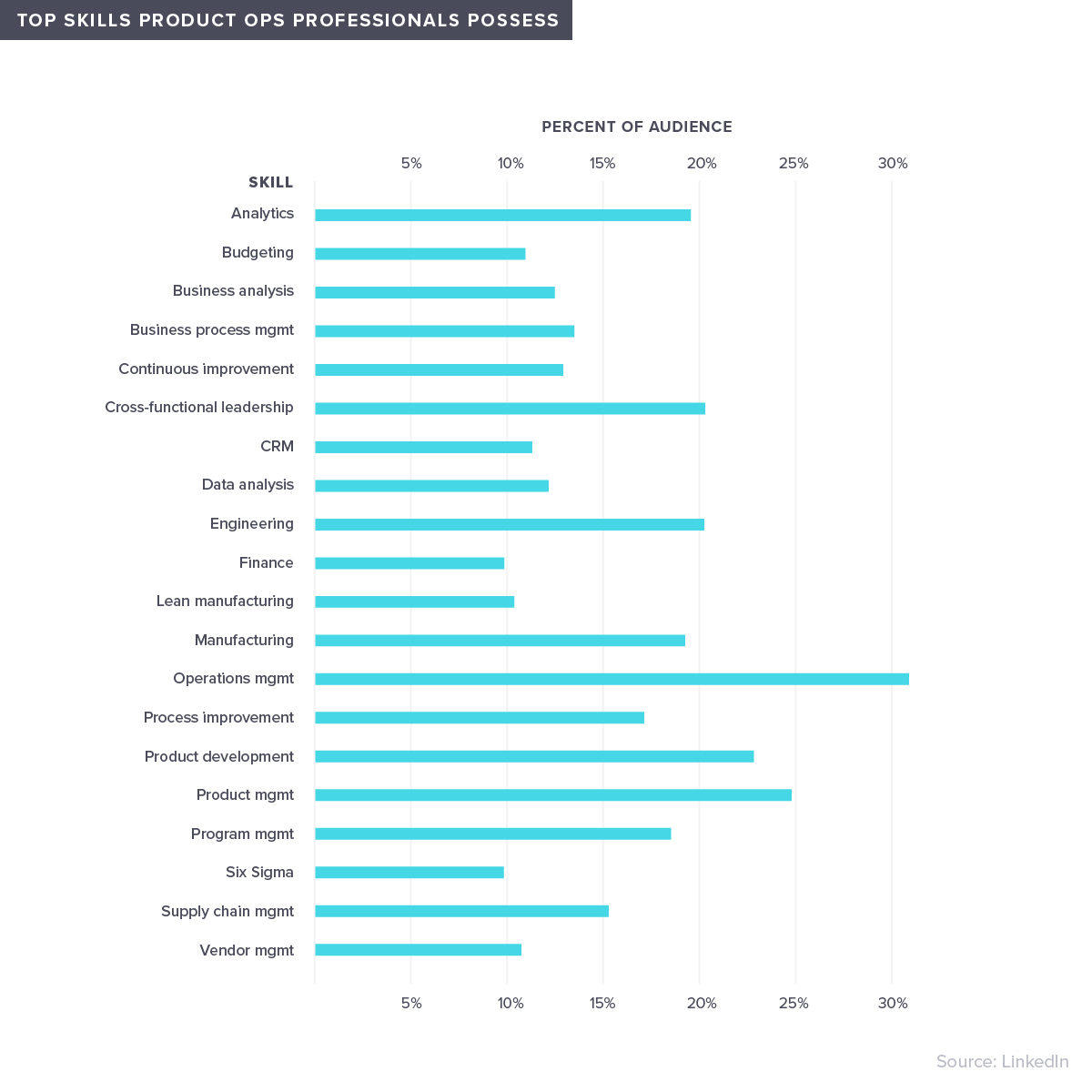
Above all, the data shows that the product ops role will look different at every company, and largely depends on business needs. For some organizations, product ops is first and foremost the keeper of all product data, enabling the rest of the the company with their analysis and insights. In other teams, product ops’ biggest contribution is the processes and efficiencies they enforce. And of course, many product ops functions are a hybrid of all of the above (and then some).
Another skill worth calling out is the fourth most common one: cross-functional team leadership. This ties back to product ops being a relatively senior role, tasked with making an impact across different functions of the business.
LinkedIn also offered a look at what topics product ops practitioners most commonly interact with, based on an algorithm that assigns topics to content on the platform.
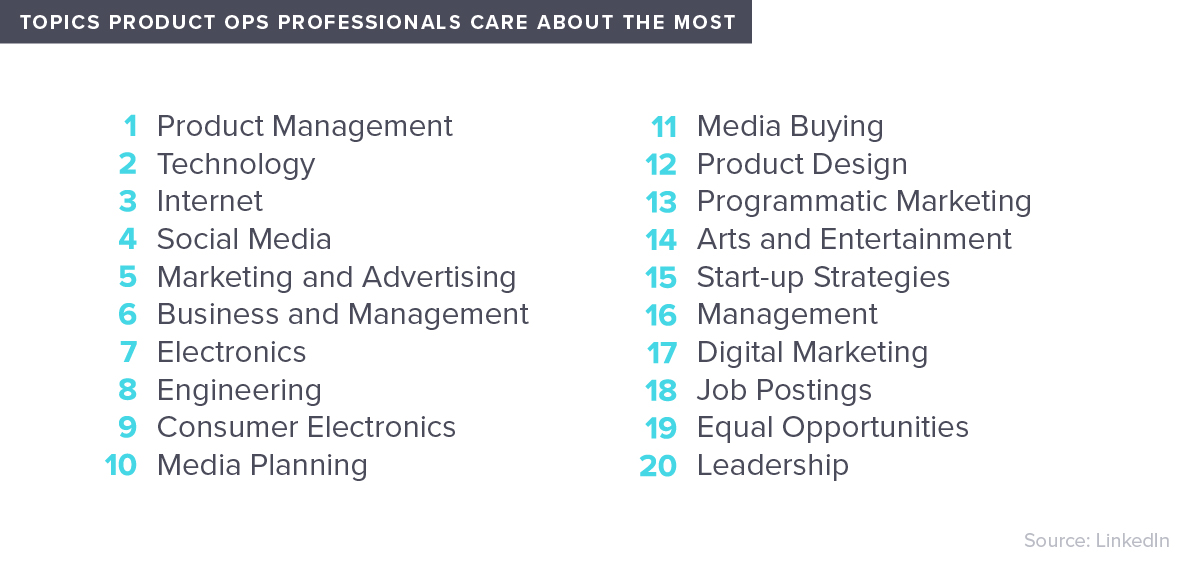
The top 20 spanned the obvious (product management, business and management, technology), the not-as-obvious (marketing and advertising, social media, management), and even the unexpected (start-up strategies, equal opportunities). Overall, these product ops pros seem to be engaging in content that will help them do their jobs better — both on a tactical and managerial level.


